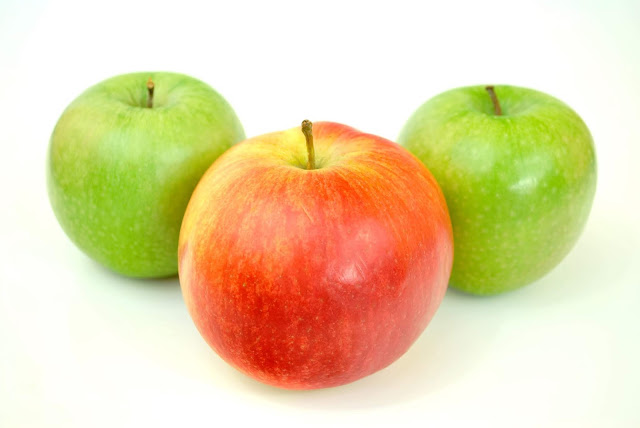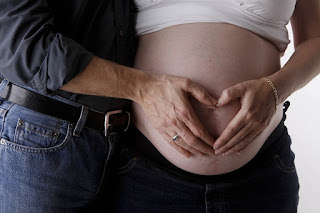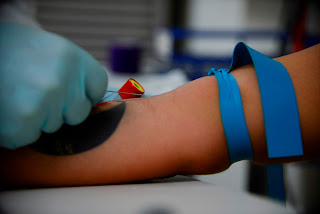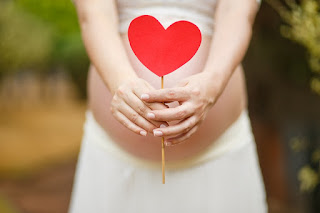Apple fruit
Apple fruit
An apple is a sweet, eatable organic product delivered by an apple tree (Malus domestica). Apple trees are developed worldwide and are the most broadly developed species in the sort Malus. The tree began in Central Asia, where its wild precursor, Malus sieversii, is as yet discovered today. Apples have been developed for a large number of years in Asia and Europe and were brought to North America by European pioneers. Apples have religious and fanciful centrality in numerous societies, including Norse, Greek and European Christian customs.Apple trees are huge whenever developed from seed. For the most part, apple cultivars are proliferated by uniting onto rootstocks, which control the size of the subsequent tree. There are in excess of 7,500 known cultivars of apples, bringing about a scope of wanted qualities. Various cultivars are reared for different tastes and use, including cooking, eating crude and juice creation. Trees and natural product are inclined to various contagious, bacterial and bother issues, which can be constrained by various natural and non-natural methods. In 2010, the natural product's genome was sequenced as a major aspect of research on ailment control and particular reproducing in apple generation.
Overall creation of apples in 2017 was 83.1 million tons, with China representing half of the aggregate.
Natural data
The apple is a deciduous tree, for the most part standing 6 to 15 ft (1.8 to 4.6 m) tall in development and up to 30 ft (9.1 m) in nature. Whenever developed, the size, shape and branch thickness are dictated by rootstock determination and cutting strategy. The leaves are on the other hand organized dim green-shaded straightforward ovals with serrated edges and marginally fleece undersides.
Apple bloom
Blooms are created in spring all the while with the sprouting of the leaves and are delivered on spikes and some long shoots. The 3 to 4 cm (1.2 to 1.6 in) blooms are white with a pink tinge that step by step blurs, five petaled, with an inflorescence comprising of a cyme with 4–6 blossoms. The focal blossom of the inflorescence is known as the "lord sprout"; it opens first and can build up a bigger organic product.
The organic product develops in pre-fall or pre-winter, and cultivars exist in a wide scope of sizes. Business cultivators plan to create an apple that is 2 3⁄4 to 3 1⁄4 in (7.0 to 8.3 cm) in width, because of market inclination. A few customers, particularly those in Japan, incline toward a bigger apple, while apples beneath 2 1⁄4 in (5.7 cm) are commonly utilized for making juice and have minimal crisp market esteem. The skin of ready apples is commonly red, yellow, green, pink, or russetted, however numerous bi-or tri-hued cultivars might be found.The skin may likewise be entirely or incompletely russeted for example unpleasant and darker. The skin is shrouded in a defensive layer of epicuticular wax. The exocarp (tissue) is commonly pale yellowish-white, however pink or yellow exocarps likewise happen.
Wild predecessors
The first wild predecessor of Malus domestica was Malus sieversii, discovered developing wild in the mountains of Central Asia in southern Kazakhstan, Kyrgyzstan, Tajikistan, and Xinjiang, China. Development of the species, in all likelihood starting on the forested flanks of the Tian Shan mountains, advanced over a significant lot of time and allowed optional introgression of qualities from different species beyond all detectable inhibitions pollinated seeds. Critical trade with Malus sylvestris, the crabapple, brought about current populaces of apples being more identified with crabapples than to the more morphologically comparative begetter Malus sieversii. In strains without ongoing admixture the commitment of the last prevails.
Genome
In 2010, an Italian-drove consortium declared they had sequenced the total genome of the apple in a joint effort with plant genomicists at Washington State University,using 'Brilliant Delicious'. It had around 57,000 qualities, the most noteworthy number of any plant genome concentrated to date and a bigger number of qualities than the human genome (around 30,000). This new comprehension of the apple genome will enable researchers to distinguish qualities and quality variations that add to protection from malady and dry spell, and other attractive attributes. Understanding the qualities behind these attributes will enable researchers to perform increasingly learned particular rearing. The genome arrangement likewise gave confirmation that Malus sieversii was the wild progenitor of the local apple—an issue that had been for quite some time bantered in established researchers.
The focal point of decent variety of the family Malus is in eastern present-day Turkey. The apple tree may have been the most punctual tree that people cultivated,[16] and producers have improved its organic products through choice more than a large number of years. Alexander the Great is credited with finding overshadowed apples in Kazakhstan in 328 BCE. Winter apples, picked in late harvest time and put away simply above solidifying, have been a significant sustenance in Asia and Europe for centuries.
Germanic agnosticism
In Norse folklore, the goddess Iðunn is depicted in the Prose Edda (written in the thirteenth century by Snorri Sturluson) as giving apples to the divine beings that give them endless energy. English researcher H. R. Ellis Davidson joins apples to religious practices in Germanic agnosticism, from which Norse agnosticism created. She calls attention to that cans of apples were found in the Oseberg transport internment site in Norway, that leafy foods (Iðunn having been portrayed as being changed into a nut in Skáldskaparmál) have been found in the early graves of the Germanic people groups in England and somewhere else on the landmass of Europe, which may have had an emblematic importance, and that nuts are as yet a perceived image of ripeness in southwest England.
Davidson takes note of an association among apples and the Vanir, a clan of divine beings related with richness in Norse folklore, refering to an example of eleven "brilliant apples" being given to charm the wonderful Gerðr by Skírnir, who was going about as errand person for the real Vanir god Freyr in stanzas 19 and 20 of Skírnismál. Davidson likewise takes note of a further association among ripeness and apples in Norse folklore in section 2 of the Völsunga adventure when the significant goddess Frigg sends King Rerir an apple after he goes to Odin for a youngster, Frigg's delivery person (in the appearance of a crow) drops the apple in his lap as he sits on a hill. Rerir's significant other's utilization of the apple brings about a six-year pregnancy and the Cesarean segment birth of their child—the saint Völsung.
Further, Davidson calls attention to the "unusual" expression "Apples of Hel" utilized in an eleventh century ballad by the skald Thorbiorn Brúnarson. She expresses this may suggest that the apple was thought of by Brúnarson as the nourishment of the dead. Further, Davidson takes note of that the possibly Germanic goddess Nehalennia is now and again portrayed with apples and that parallels exist in early Irish stories. Davidson affirms that while development of the apple in Northern Europe reaches out back to in any event the season of the Roman Empire and came to Europe from the Near East, the local assortments of apple trees developing in Northern Europe are little and severe. Davidson infers that in the figure of Iðunn "we should have a diminish impression of an old image: that of the watchman goddess of the nurturing product of the other world."
Greek folklore.
Apples show up in numerous religious customs, frequently as a supernatural or prohibited natural product. One of the issues recognizing apples in religion, folklore and folktales is that "apple" was utilized as a nonexclusive term for all (remote) natural product, other than berries, including nuts, as late as the seventeenth century. For example, in Greek folklore, the Greek saint Heracles, as a piece of his Twelve Labors, was required to make a trip to the Garden of the Hesperides and pick the brilliant apples off the Tree of Life developing at its inside.
The Greek goddess of disagreement, Eris, moved toward becoming displeased after she was prohibited from the wedding of Peleus and Thetis. In reprisal, she hurled a brilliant apple recorded Καλλίστη (Kalliste, here and there transliterated Kallisti, "For the most delightful one"), into the wedding party. Three goddesses guaranteed the apple: Hera, Athena, and Aphrodite. Paris of Troy was named to choose the beneficiary. Subsequent to being renumerated by both Hera and Athena, Aphrodite enticed him with the most lovely lady on the planet, Helen of Sparta. He granted the apple to Aphrodite, in this manner by implication causing the Trojan War.
The apple was in this way considered, in antiquated Greece, hallowed to Aphrodite. To toss an apple at somebody was to emblematically announce one's adoration; and likewise, to get it was to emblematically demonstrate one's acknowledgment of that affection. A motto asserting initiation by Plato states:
I toss the apple at you, and in the event that you are eager to adore me, take it and offer your girlhood with me; yet on the off chance that your considerations are what I supplicate they are not, and, after its all said and done take it, and think about how fleeting is excellence.
Plato, Epigram VII
Atalanta, likewise of Greek folklore, dashed every one of her suitors trying to maintain a strategic distance from marriage. She beat everything except Hippomenes (otherwise called Melanion, a name conceivably got from melon the Greek word for both "apple" and organic product in general),[28] who crushed her by clever, not speed. Hippomenes realized that he couldn't win in a reasonable race, so he utilized three brilliant apples (endowments of Aphrodite, the goddess of adoration) to divert Atalanta. It took every one of the three apples and the majority of his speed, yet Hippomenes was at long last fruitful, winning the race and Atalanta's hand.
Christian craftsmanship
In spite of the fact that the illegal product of Eden in the Book of Genesis isn't distinguished, mainstream Christian convention has held that it was an apple that Eve cajoled Adam to impart to her. The root of the famous distinguishing proof with a natural product obscure in the Middle East in scriptural occasions is found in perplexity between the Latin words mālum (an apple) and mălum (a fiendishness), every one of which is regularly composed malum. The tree of the illegal natural product is designated "the tree of the learning of good and underhandedness" in Genesis 2:17, and the Latin for "good and fiendishness" is bonum et malum.
Renaissance painters may likewise have been affected by the tale of the brilliant apples in the Garden of Hesperides. Accordingly, in the narrative of Adam and Eve, the apple turned into an image for information, eternality, allurement, the fall of man into wrongdoing, and sin itself. The larynx in the human throat has been known as the "Thyroid cartilage" in view of a thought that it was brought about by the taboo organic product staying in the throat of Adam. The apple as image of sexual enticement has been utilized to suggest human sexuality, conceivably in an unexpected vein.
Cultivars
There are in excess of 7,500 known cultivars of apples.[36] Cultivars shift in their yield and a definitive size of the tree, notwithstanding when developed on a similar rootstock. Various cultivars are accessible for mild and subtropical atmospheres. The UK's National Fruit Collection, which is the duty of the Department of Environment, Food, and Rural Affairs, incorporates an accumulation of more than 2,000 cultivars of apple tree in Kent. The University of Reading, which is in charge of building up the UK national accumulation database, gives access to look through the national gathering. The University of Reading's work is a piece of the European Cooperative Program for Plant Genetic Resources of which there are 38 nations taking an interest in the Malus/Pyrus work gathering.
The UK's national organic product accumulation database contains an abundance of data on the qualities and inception of numerous apples, including elective names for what is basically the equivalent "hereditary" apple cultivar. The majority of these cultivars are reproduced for eating crisp (dessert apples), however some are developed explicitly for (cooking apples) or delivering juice. Juice apples are ordinarily excessively tart and astringent to eat new, however they give the drink a rich flavor that pastry apples can't.
Industrially prominent apple cultivars are delicate yet fresh. Other attractive characteristics in current business apple rearing are a brilliant skin, nonattendance of russeting, simplicity of transportation, protracted capacity, exceptional returns, sickness obstruction, basic apple shape, and created season. Present day apples are commonly better than more established cultivars, as prominent preferences for apples have changed after some time. Most North Americans and Europeans support sweet, subacid apples, yet tart apples have a solid minority following. Incredibly sweet apples with scarcely any corrosive flavor are prominent in Asia, particularly the Indian Subcontinent .
Old cultivars are regularly strangely molded, russeted, and develop in an assortment of surfaces and hues. Some discover them to have preferred flavor over present day cultivars, yet they may have different issues that make them economically unviable—low yield, illness vulnerability, poor resistance for capacity or transport, or simply being "an inappropriate" size. A couple of old cultivars are still created on an enormous scale, yet many have been safeguarded by home cultivators and ranchers that sell legitimately to neighborhood markets. Numerous uncommon and locally significant cultivars with their own extraordinary taste and appearance exist; apple preservation battles have jumped up far and wide to safeguard such nearby cultivars from eradication. In the United Kingdom, old cultivars, for example, 'Cox's Orange Pippin' and 'Egremont Russet' are still financially significant despite the fact that by present day norms they are low yielding and vulnerable to malady.
Rearing
Numerous apples develop promptly from seeds. In any case, more than with most enduring natural products, apples must be spread agamically by uniting to get the sweetness and other attractive attributes of the parent. This is on the grounds that seedling apples are a case of "outrageous heterozygotes", in that as opposed to acquiring qualities from their folks to make another apple with parental attributes, they are rather fundamentally not the same as their folks, maybe to contend with the numerous irritations. Triploid cultivars have an extra regenerative obstruction in that 3 arrangements of chromosomes can't be partitioned equally during meiosis, yielding inconsistent isolation of the chromosomes (aneuploids). Indeed, even for the situation when a triploid plant can create a seed (apples are a model), it happens inconsistently, and seedlings once in a while endure.
Since apples don't breed genuine when planted as seeds, uniting is commonly used to deliver new apple trees. The rootstock utilized for the base of the join can be chosen to create trees of an enormous assortment of sizes, just as changing the winter toughness, bug and sickness opposition, and soil inclination of the subsequent tree. Diminutive person rootstocks can be utilized to deliver extremely little trees (under 3.0 m (10 ft) high at development), which prove to be fruitful prior in their life cycle than full size trees. Smaller person rootstocks for apple trees can be followed as far back as 300 BC, to the region of Persia and Asia Minor. Alexander the Great sent examples of diminutive person apple trees to Aristotle's Lyceum. Smaller person rootstocks wound up basic by the fifteenth century and later experienced a few cycles of fame and decrease all through the world. Most of the rootstocks utilized today to control size in apples were created in England in the mid 1900s. The East Malling Research Station led broad investigation into rootstocks, and today their rootstocks are given a "M" prefix to assign their cause. Rootstocks set apart with a "MM" prefix are Malling-arrangement cultivars later crossed with trees of 'Northern Spy' in Merton, England.
Most new apple cultivars start as seedlings, which either emerge by some coincidence or are reproduced by intentionally crossing cultivars with promising qualities. The words "seedling", "pippin", and "part" for the sake of an apple cultivar recommend that it began as a seedling. Apples can likewise frame bud sports (changes on a solitary branch). Some bud sports end up being improved strains of the parent cultivar. Some vary adequately from the parent tree to be viewed as new cultivars.
Since the 1930s, the Excelsior Experiment Station at the University of Minnesota has presented a consistent movement of significant apples that are broadly developed, both economically and by nearby orchardists, all through Minnesota and Wisconsin. Its most significant commitments have included 'Haralson' (which is the most broadly developed apple in Minnesota), 'Well off', 'Honeygold', and 'Honeycrisp'.
Apples have been acclimatized in Ecuador at extremely high heights, where they can regularly, with the required elements, give crops two times every year in light of steady mild conditions all year.
Fertilization
Apples are self-contrary; they should cross-fertilize to create organic product. During the blooming each season, apple producers frequently use pollinators to convey dust. Bumble bees are most normally utilized. Plantation artisan honey bees are additionally utilized as supplemental pollinators in business plantations. Honey bee rulers are in some cases present in plantations, however not as a rule in adequate number to be critical pollinators.
There are four to seven fertilization bunches in apples, contingent upon atmosphere:
- Gathering A – Early blossoming, 1 to 3 May in England ('Gravenstein', 'Red Astrachan')
- Gathering B – 4 to 7 May ('Idared', 'McIntosh')
- Gathering C – Mid-season blossoming, 8 to 11 May ('Granny Smith', 'Cox's Orange Pippin')
- Gathering D – Mid/late season blossoming, 12 to 15 May ('Golden Delicious', 'Calville blanc d'hiver')
- Gathering E – Late blossoming, 16 to 18 May ('Braeburn', 'Reinette d'Orléans')
- Gathering F – 19 to 23 May ('Suntan')
- Gathering H – 24 to 28 May ('Court-Pendu Gris' – additionally called Court-Pendu plat)
One cultivar can be pollinated by a perfect cultivar from a similar gathering or close (A with An, or A with B, yet not A with C or D).
Cultivars are here and there characterized constantly of pinnacle sprout in the normal 30-day bloom period, with pollenizers chose from cultivars inside a 6-day cover period.
Development and reap
Cultivars differ in their yield and a definitive size of the tree, notwithstanding when developed on a similar rootstock. A few cultivars, whenever left unpruned, develop exceptionally enormous—giving them a chance to hold up under more natural product, yet making reaping progressively troublesome. Contingent upon tree thickness (number of trees planted per unit surface territory), develop trees normally bear 40–200 kg (90–440 lb) of apples every year, however profitability can be near zero in poor years. Apples are gathered utilizing three-point stepping stools that are intended to fit among the branches. Trees united on overshadowing rootstocks bear around 10–80 kg (20–180 lb) of natural product every year.
Ranches with apple plantations open them to general society so purchasers can pick their own apples.
Harvests age at various occasions of the year as per the cultivar. Cultivar that yield their harvest in the mid year incorporate 'Affair', 'Brilliant Supreme', 'McIntosh', 'Straightforward', 'Primate', 'Sweet Bough', and 'Duchess'; fall makers incorporate 'Fuji', 'Jonagold', 'Brilliant Delicious', 'Red Delicious', 'Chenango', 'Gravenstein', 'Affluent', 'McIntosh', 'Day off', 'Blenheim'; winter makers incorporate 'Winesap', 'Granny Smith', 'Ruler', 'Wagener', 'Swayzie', 'Greening', and 'Tolman Sweet'.
Capacity
Industrially, apples can be put away for certain months in controlled air chambers to postpone ethylene-instigated aging. Apples are regularly put away in chambers with higher groupings of carbon dioxide and high air filtration. This keeps ethylene focuses from ascending to higher sums and keeping maturing from happening too rapidly.
For home stockpiling, most cultivars of apple can be held for around about fourteen days when kept at the coolest piece of the icebox (for example underneath 5 °C). Some can be stockpiled to a year without huge degradation.[dubious – discuss][54][verification needed] Some assortments of apples (for example 'Granny Smith' and 'Fuji') have multiple occasions the capacity life of others.
Non-natural apples might be splashed with 1-methylcyclopropene hindering the apples' ethylene receptors, briefly keeping them from maturing.
Vermin and infections
Apple trees are powerless to various parasitic and bacterial ailments and creepy crawly bugs. Numerous business plantations seek after a program of compound showers to keep up high natural product quality, tree wellbeing, and significant returns. These deny the utilization of manufactured pesticides, however some more established pesticides are permitted. Natural techniques incorporate, for example, acquainting its regular predator with diminish the number of inhabitants in a specific vermin.
A wide scope of nuisances and illnesses can influence the plant. Three of the more typical illnesses or irritations are buildup, aphids, and apple scab.
Buildup is portrayed by light dim fine fixes showing up on the leaves, shoots and blooms, ordinarily in spring. The blooms turn a rich yellow shading and don't grow effectively. This can be dealt with comparably to Botrytis—wiping out the conditions that caused the malady and consuming the tainted plants are among prescribed activities.
Aphids are a little creepy crawly. Five types of aphids generally assault apples: apple grain aphid, ruddy apple aphid, apple aphid, spirea aphid, and the wooly apple aphid. The aphid species can be recognized by shading, season, and by contrasts in the cornicles (little combined projections from their back). Aphids feed on foliage utilizing needle-like mouth parts to suck out plant juices. At the point when present in high numbers, certain species diminish tree development and force.
Apple scab: Apple scab makes leaves create olive-dark colored spots with a smooth surface that later turn darker and become plug like in surface. The ailment likewise influences the natural product, which additionally creates comparative darker spots with smooth or plug like surfaces. Apple scab is spread through organism developing in old apple leaves on the ground and spreads during warm spring climate to taint the new year's development.
Among the most genuine sickness issues are a bacterial malady called fireblight, and two contagious illnesses: Gymnosporangium rust and dark spot. Other vermin that influence apple trees incorporate Codling moths and apple slimy parasites. Youthful apple trees are likewise inclined to well evolved creature bugs like mice and deer, which feed on the delicate bark of the trees, particularly in winter. The hatchlings of the apple clearwing moth (red-belted clearwing) tunnel through the bark and into the phloem of apple trees, possibly causing critical harm.








Comments
Post a Comment